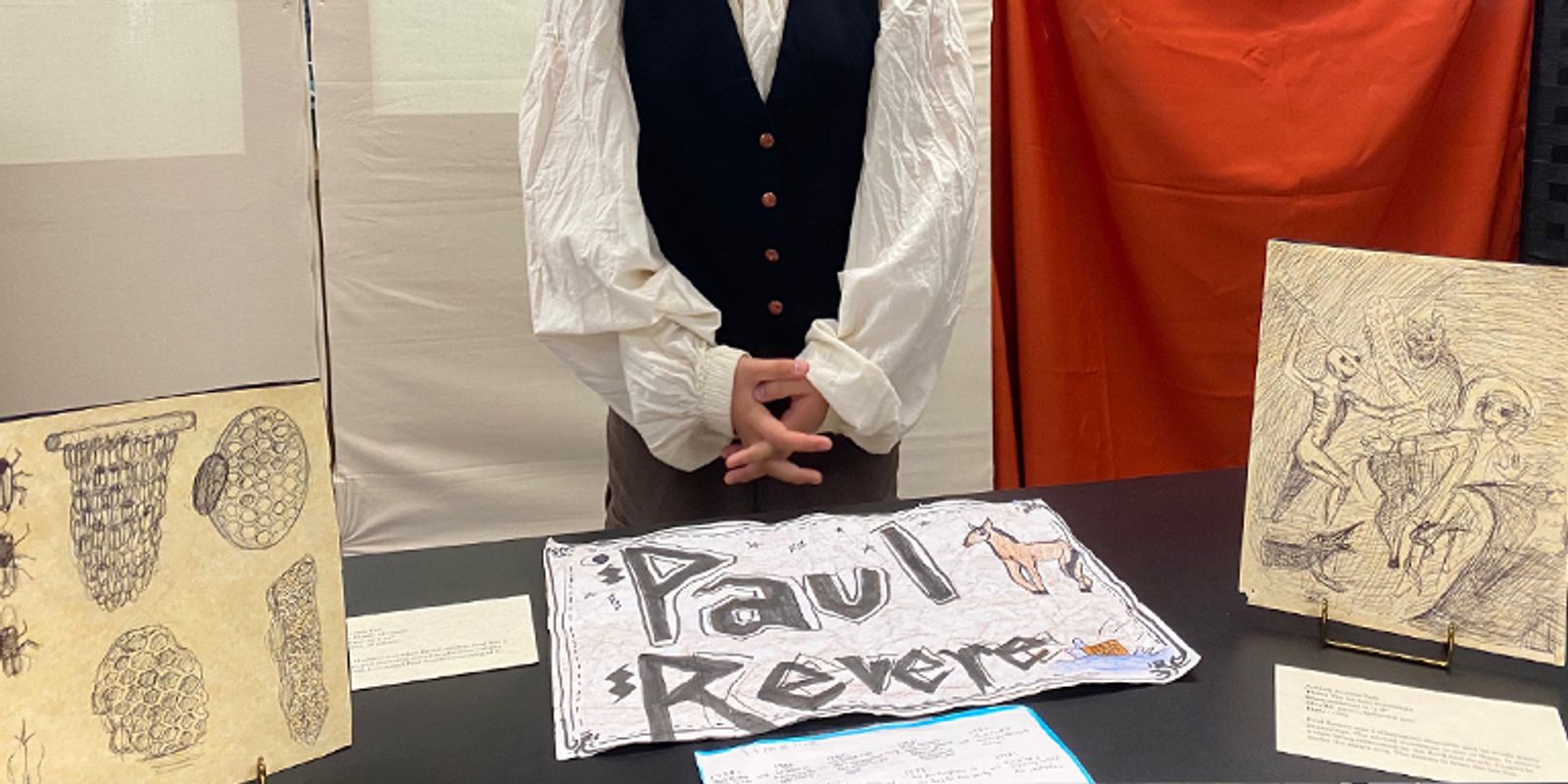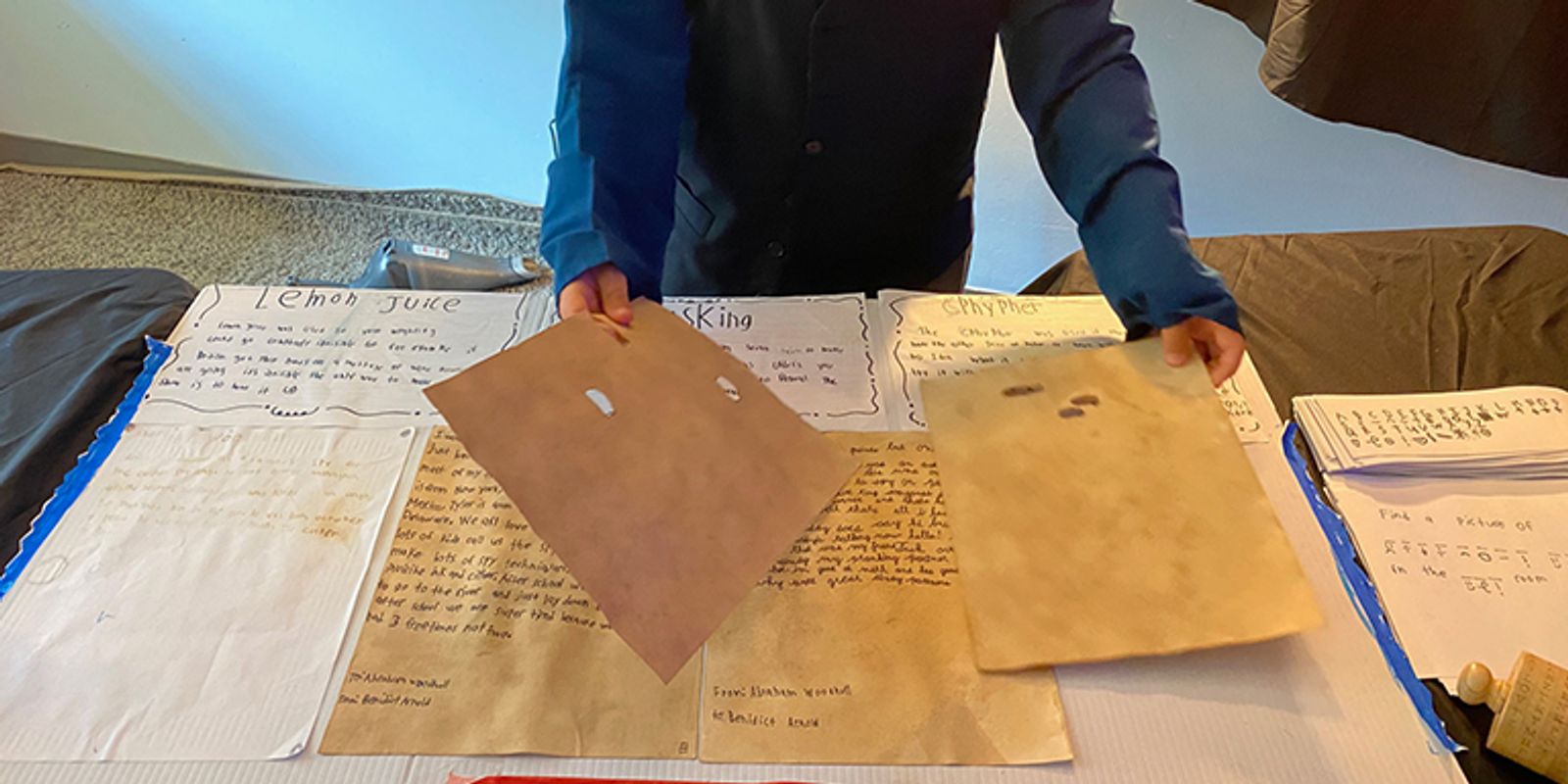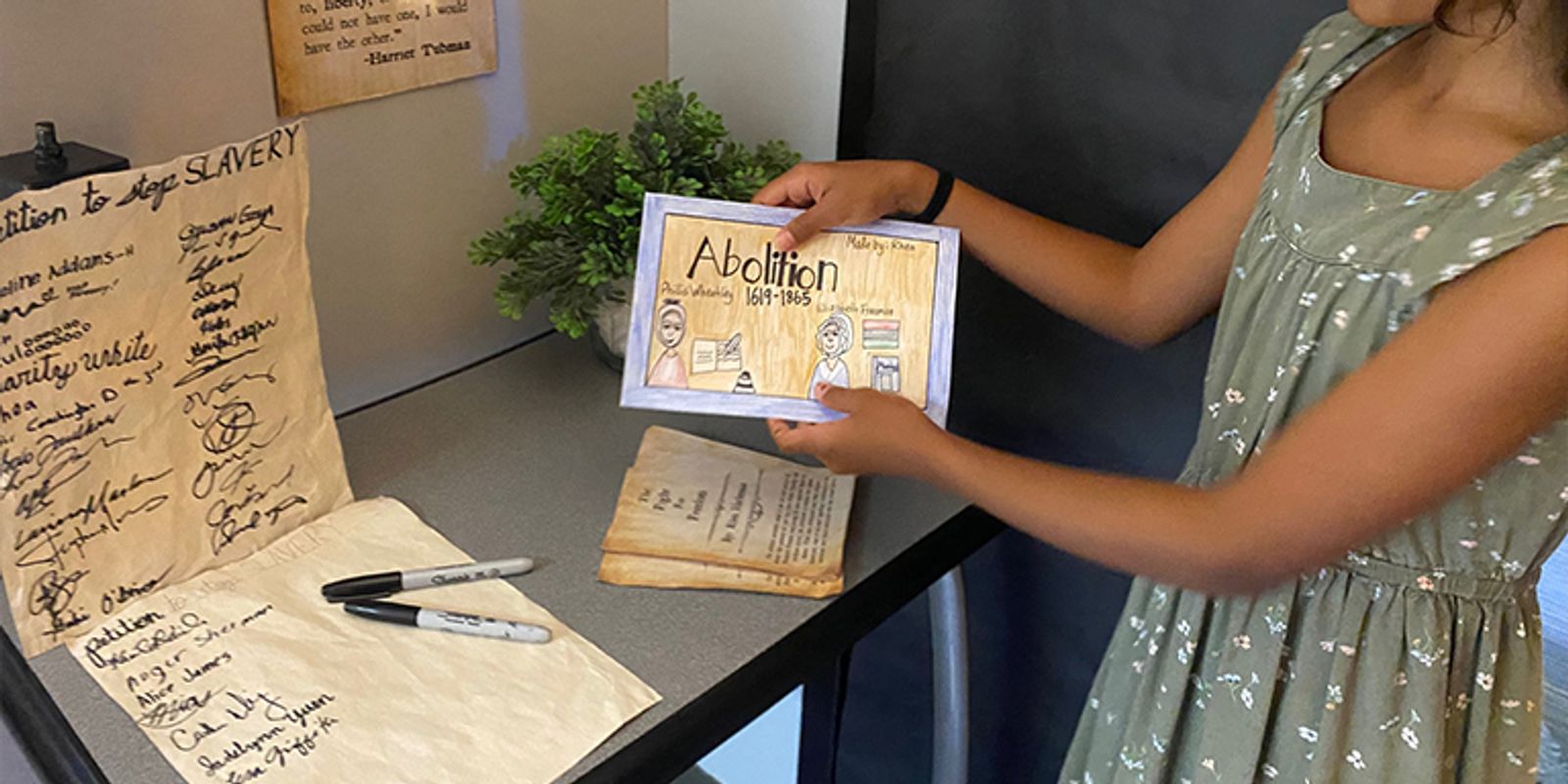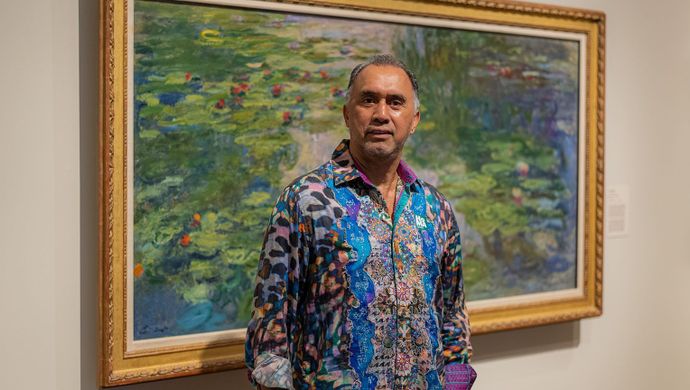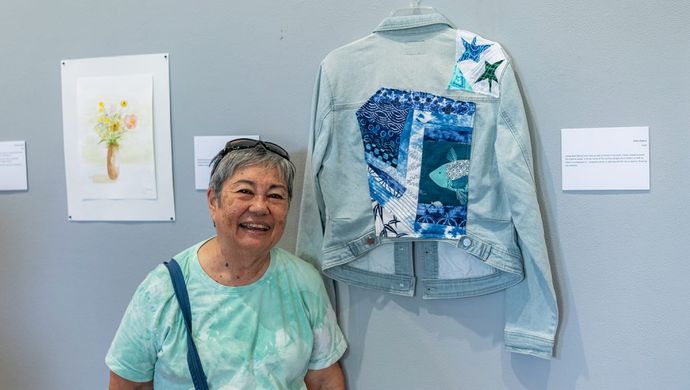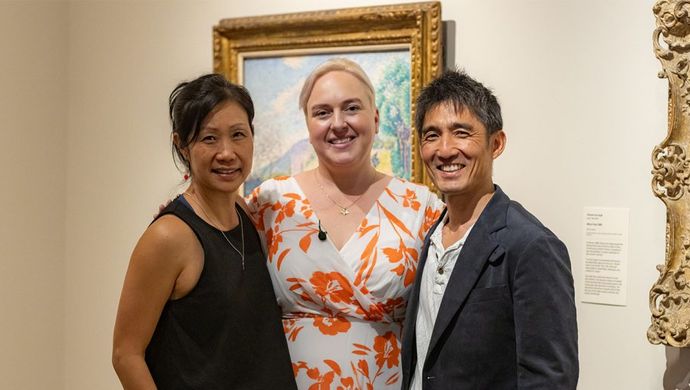 Story
Story
HoMA helps fifth graders create a museum
Three months later, on May 10, these enterprising fifth graders, dressed in period costumes, opened the American Revolution Museum at their school. Museum goers were greeted by Lily Richardson and Alexandra Marks proclaiming Patrick Henry’s famed “Give me liberty, or give me death!” speech then were invited to experience the classrooms-turned-galleries.
Proud parents explored spaces dedicated to Fine Art, Models & Artifacts, Technology, and the Declaration of Independence (where students delivered an impressive rap about the famous piece of parchment—watch out Hamilton!). In addition, the museum featured a theater, which screened the engaging student-produced film The Boston Tea Party, and the Liberty Tavern, serving freshly baked, very delicious molasses cookies and apple cider.
“[The students] see things at the museum and they ask us, can we do that too? And we say yes, absolutely,” says fifth grade teacher Joseph Villaluz, who collaborated with fellow teacher Lisa Uesugi spearheading the museum initiative. “HoMA makes a difference and I thank you for your partnership.”
In the Fine Art gallery were portraits of key revolution players such as Abigail Adams, Benjamin Franklin, King George III, Martha Washington, Paul Revere, and Mary Hays. On her portraits of the Marquis de Lafayette and Baron von Steuben, Marks included quotes by the two historic figures, such as “Humanity has won its battle. Liberty now has a country.” She had been inspired by Kapulani Landgraf’s photographic portraits overlaid with Haunani-Kay Trask’s rousing words “We are not American,” which she saw while at the museum.
“I wanted something that would draw attention to the face because it is blank. So doing something that has more detail would draw the viewer’s attention to the center of the image, but I didn’t need something that would take away from the face,” explained Marks.
The students’ research and execution of their exhibition concepts were impressive, from artifacts to well-written labels. They created dioramas, computer games, paintings, a film, ciphers and coded messages, and spoke eloquently about their subjects. They also thoughtfully addressed issues such as slavery, women’s rights, and war.
They also illustrated how far resources have come from the days of Encyclopedia Britannica. After a group of students performed their Declaration of Independence rap, when asked if they wrote the lyrics, Kaizen Lucas-Kawata replied, “Let’s just say AI did it.”
After conceptualizing their projects, students were able to submit questions about their work to HoMA via an app, and received responses from museum staff. “The questions were wide ranging and a lot of them focused on how to solve problems that they encountered in completing their projects,” says HoMA director of learning and engagement Aaron Padilla, working with the school for the second year in a row. “For example, one student asked about signage—how to take an approach that is both artistic and clear. I could see that students took the feedback into account in their finished work—their execution was spot on.”
Uesugi got emotional talking about her students’ accomplishment. “The partnership between the museum and our school and these kids made it so authentic and meaningful for them. They took your advice, they took inspiration, and it made our museum real.”
Following their visit to the American Revolution Museum, Padilla and HoMA director of curatorial affairs Catherine Whitney shared their thoughts with the class.
“When you’re ready, come work for us, because you’re pros already,” said Padilla. He was especially impressed with the youngsters’ poise in playing roles of the American revolutionaries. “It takes a lot of time, practice, and energy and I want to let you know it all paid off.”
Whitney left them with these encouraging words: “You guys are the museums of the future, so keep dreaming and keep doing art.”



